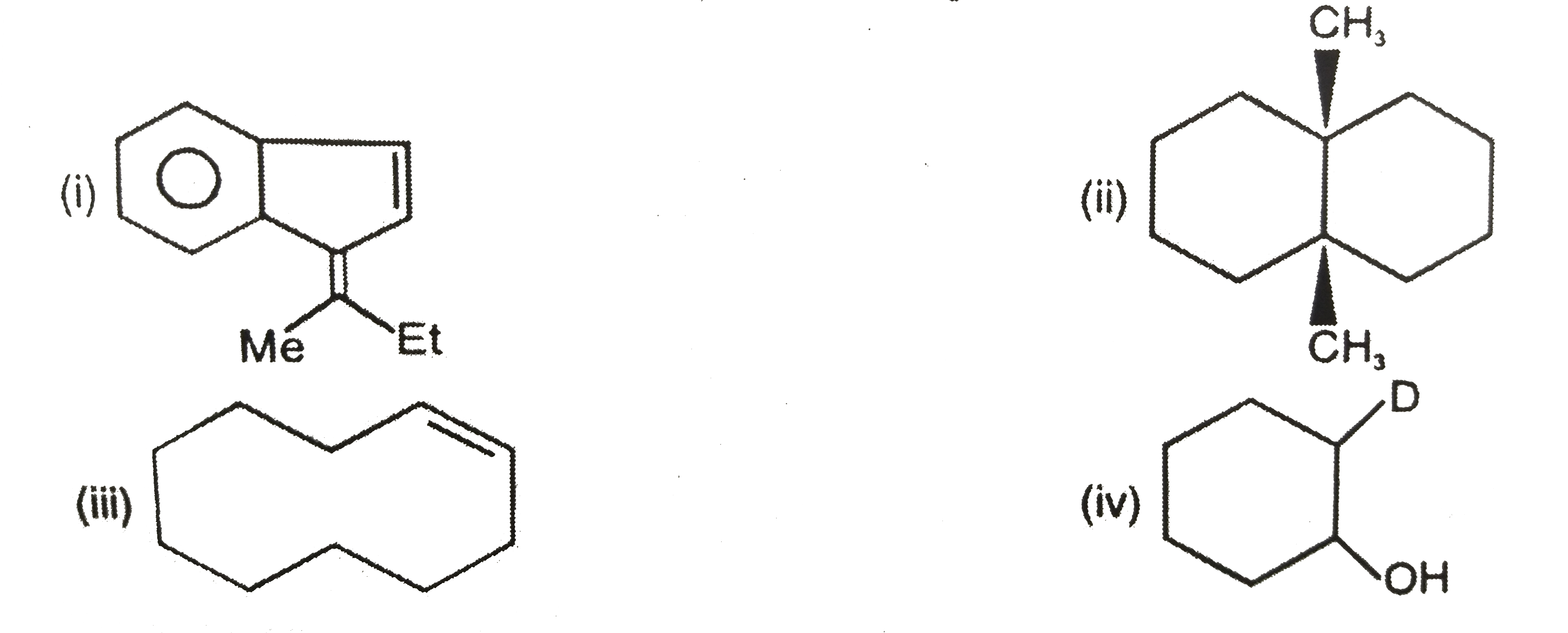Can a compound of the type aaC = Cab show geometrical isomerism ? If not, explain why?
To determine whether a compound of the type AAC=CAB can show geometrical isomerism, we need to analyze the conditions required for geometrical isomerism to occur.
Step 1: Identify the Structure
The compound can be represented as follows:
- There is a double bond between two carbon atoms.
- The first carbon (C1) is attached to two identical groups (A).
- The second carbon (C2) is attached to one identical group (A) and one different group (B).
Step 2: Check for Restricted Rotation
For geometrical isomerism to occur, there must be restricted rotation around the double bond. In this case, the double bond between C1 and C2 does provide restricted rotation, fulfilling the first condition.
Step 3: Check for Different Groups
The second condition for geometrical isomerism is that each carbon atom involved in the double bond must have two different substituents.
- On C1, we have two identical groups (A and A).
- On C2, we have one group (A) and one different group (B).
Since C1 has two identical groups, it does not meet the requirement for having two different groups. Therefore, we cannot have geometrical isomers.
Conclusion
Since one of the carbon atoms (C1) has two identical substituents, the compound AAC=CAB cannot exhibit geometrical isomerism.
Final Answer
No, the compound of the type AAC=CAB cannot show geometrical isomerism because one carbon atom (C1) is bonded to two identical groups (A), which does not satisfy the requirement of having two different groups on each carbon involved in the double bond.
---
The compound can be represented as follows:
- There is a double bond between two carbon atoms.
- The first carbon (C1) is attached to two identical groups (A).
- The second carbon (C2) is attached to one identical group (A) and one different group (B).
For geometrical isomerism to occur, there must be restricted rotation around the double bond. In this case, the double bond between C1 and C2 does provide restricted rotation, fulfilling the first condition.
The second condition for geometrical isomerism is that each carbon atom involved in the double bond must have two different substituents.
- On C1, we have two identical groups (A and A).
- On C2, we have one group (A) and one different group (B).
Since one of the carbon atoms (C1) has two identical substituents, the compound AAC=CAB cannot exhibit geometrical isomerism.
No, the compound of the type AAC=CAB cannot show geometrical isomerism because one carbon atom (C1) is bonded to two identical groups (A), which does not satisfy the requirement of having two different groups on each carbon involved in the double bond.
Topper's Solved these Questions
- ORGANIC CHEMISTRY : SOME BASIC PRINCIPLES AND TECHNIQUES BOOK - ICSECHAPTER - ORGANIC CHEMISTRY : SOME BASIC PRINCIPLES AND TECHNIQUES EXERCISE - VERY SHORT ANSWER TYPE QUESTIONS
87 Videos
- ORGANIC CHEMISTRY : SOME BASIC PRINCIPLES AND TECHNIQUES BOOK - ICSECHAPTER - ORGANIC CHEMISTRY : SOME BASIC PRINCIPLES AND TECHNIQUES EXERCISE - SHORT ANSWER TYPE QUESTIONS
110 Videos
- ORGANIC CHEMISTRY : SOME BASIC PRINCIPLES AND TECHNIQUES BOOK - ICSECHAPTER - ORGANIC CHEMISTRY : SOME BASIC PRINCIPLES AND TECHNIQUES EXERCISE - NCERT TEXT-BOOK EXERCISES (WITH HINTS AND SOLUTIONS )
72 Videos
- HYDROGENBOOK - ICSECHAPTER - HYDROGENEXERCISE - NCERT TEXT-BOOK EXERCISE (With Hints and Solutions)
53 Videos
- REDOX REACTIONS (OXIDATION AND REDUCTION)BOOK - ICSECHAPTER - REDOX REACTIONS (OXIDATION AND REDUCTION)EXERCISE - NCERT TEXT-BOOK. EXERCISES ((With Hints and Solutions)
69 Videos
Similar Questions
Can a compound of the type axC = Cay show geometrical isomerism ?
View SolutionCan 2-pentene show geometrical isomerism ?
View SolutionWhich complexes show geometrical isomerism ?
View SolutionWhy do alkynes not show geometrical isomerism ?
View Solution1-butene cannot show geometrical isomerism.
View SolutionIn given compounds how many can show geometrical isomerism : ,

View SolutionWhich of the following can show geometrical isomerism?
View SolutionWhich of the folllowing shows geometrical isomerism ?
View Solution2-butene shows geometrical isomerism due to:
View Solution2-butene shows geometrical isomerism due to:
View Solution
